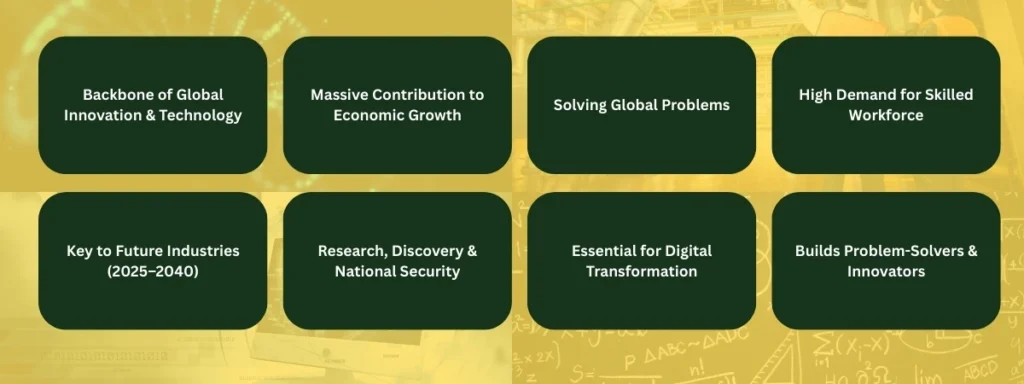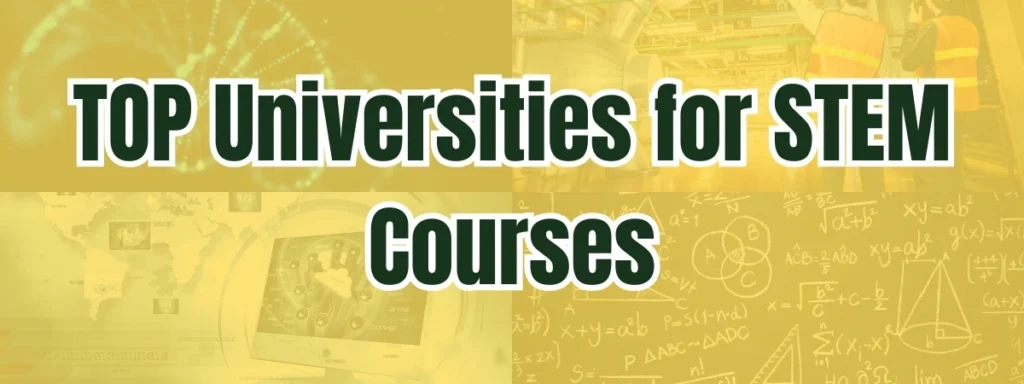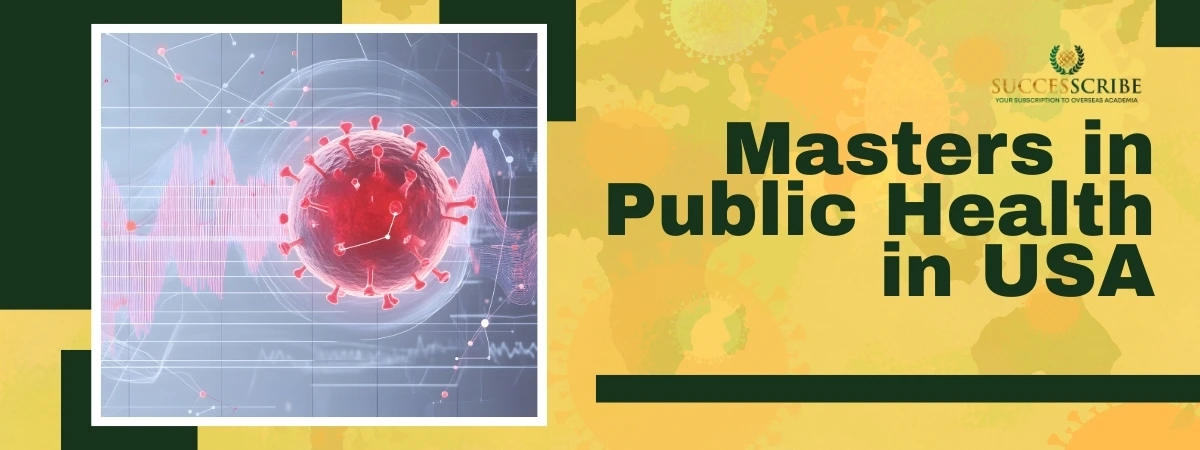In the last decade, the world has witnessed a rapid shift toward innovation, automation, digital transformation, sustainability, and scientific advancement. As a result, careers rooted in STEM courses – Science, Technology, Engineering, and Mathematics – have become the backbone of global development. From artificial intelligence and robotics to biotechnology and clean energy, every major industry today is powered by STEM talent.
In 2025–26, STEM education is not just a trend – it is a global necessity. Countries like the United States, Germany, Canada, the United Kingdom, Japan, India, Singapore, and Australia have made STEM a national priority to remain competitive in the global economy. According to World Economic Forum projections, more than 70% of future jobs will require STEM skills, and the demand will continue to grow until 2040.
Key Highlights – STEM Courses
- STEM Full Form and Meaning
- Evolution of STEM
- Why STEM Is Prioritized Worldwide
- Your Comprehensive and Updated STEM Courses List
- Top Universities for STEM Courses
- Eligibility Criteria for STEM Courses (UG & PG)
- Why Study STEM Courses Abroad
- Conclusion
- FAQs
STEM Full Form and Meaning
The STEM full form is:
- S – Science
- T – Technology
- E – Engineering
- M – Mathematics
STEM courses are academic programs focused on the disciplines of Science, Technology, Engineering, and Mathematics. They are inherently interdisciplinary, blending theoretical knowledge with rigorous practical application to solve real-world problems. Unlike traditional siloed education, STEM encourages a holistic approach. For instance, a biologist today uses sophisticated technology (like DNA sequencers), complex engineering (to build prosthetics), and advanced mathematics (for statistical analysis) in their work.
Evolution of STEM
- The term STEM was coined by the U.S. National Science Foundation (NSF) in the early 2000s.
- Initially introduced to improve scientific literacy and create a stronger workforce, STEM soon became a global academic movement.
- By 2015–2020, the focus shifted to AI, programming, and engineering design thinking.
- In 2025–26, STEM is central to emerging industries like quantum technology, nanotechnology, advanced manufacturing, and precision healthcare.
Why Modern Education Systems Prioritize STEM
Modern education systems are shifting from rote learning to skill-based, experiential learning, and STEM is at the heart of this transformation. It cultivates the “4 Cs”:
- Critical Thinking
- Creativity
- Collaboration
- Communication
These skills are essential for navigating the complexities of the 21st-century workplace, regardless of the specific career path.
Why STEM Is Prioritized Worldwide

STEM is not just an academic choice – it is the driving force behind the world’s technological, economic, and scientific progress. As countries compete for global leadership in innovation, STEM education has become a national priority across continents. Here’s why governments, universities, and industries worldwide are investing heavily in STEM talent:
1. Backbone of Global Innovation & Technology
Every major breakthrough in the past decade – AI, robotics, biotechnology, quantum computing, nanotechnology, and space exploration – has been powered by STEM.
Nations understand that their competitiveness in the global economy depends directly on their STEM capabilities.
2. Massive Contribution to Economic Growth
STEM sectors contribute trillions of dollars to the global GDP.
Countries that lead in STEM dominate:
- High-tech manufacturing
- Pharmaceuticals & biotech
- Defense and aerospace
- EV & clean energy sectors
- Digital industries
This is why nations prioritize STEM development to strengthen economic resilience and long-term growth.
3. Solving Global Problems
Humanity’s biggest challenges – climate change, pandemics, energy crisis, food security, cybersecurity – demand STEM-driven solutions.
STEM professionals create innovations that protect ecosystems, improve healthcare, enhance safety, and build sustainable futures.
4. High Demand for Skilled Workforce
The global STEM workforce shortage is real.
World Economic Forum data shows that over 70% of emerging jobs require STEM skills.
Countries are prioritizing STEM to:
- Fill skill gaps
- Boost industrial productivity
- Meet future employment needs
This is why STEM graduates enjoy excellent job security and global mobility.
5. Key to Future Industries (2025–2040)
Industries of the future – such as AI, quantum tech, advanced robotics, biomedical engineering, 6G communication, and green energy – will depend almost entirely on STEM professionals.
Governments know that the next era of global leadership belongs to STEM-driven nations.
6. Research, Discovery & National Security
From defense technology and space missions to medical research and digital security, STEM is central to national safety and advancement. Nations prioritize STEM to:
- Strengthen cybersecurity
- Build advanced defense systems
- Expand scientific research infrastructure
- Compete in space and satellite technology
7. Essential for Digital Transformation
Industries worldwide are undergoing digital transformation – Industry 4.0, automation, IoT, cloud computing, and smart infrastructure.
STEM graduates are the architects of this transformation, making them indispensable in the modern world.
8. Builds Problem-Solvers & Innovators
STEM education develops analytical thinking, creativity, experimentation, and innovation – skills that define the leaders of tomorrow.
This is why schools and universities worldwide emphasize STEM from an early age.
Suggested Post: Letter of recommendation for study abroad
Your Comprehensive and Updated STEM Courses List
STEM is a vast and dynamic field that brings together the most exciting and impactful areas of modern education. To help students choose the right path, here is a well-organized, easy-to-understand, and updated STEM courses list, categorized into Science, Technology, Engineering, and Mathematics. Each category includes a short, powerful explanation to make the concepts clearer and more student-friendly.
1. Science Courses
Science forms the foundation of STEM, offering a deep understanding of the natural world, living organisms, physical laws, and experimental research.
- Physics
Explores matter, energy, motion, electromagnetism, quantum physics, and space science.
Career roles: Physicist, Researcher, Astrophysicist, Nuclear Engineer.
- Chemistry
Studies elements, compounds, reactions, materials, and analytical processes.
Career roles: Chemist, Materials Scientist, Pharmacologist.
- Biology
Focuses on life processes, cell biology, ecology, genetics, and anatomy.
Career roles: Biologist, Research Associate, Environmental Scientist.
- Biotechnology
Combines biology and technology to create innovations in healthcare, agriculture, and genetics.
Career roles: Biotech Scientist, Genetic Engineer, Lab Specialist.
- Data Science
Uses statistics, algorithms, and AI to extract insights from large datasets.
Career roles: Data Scientist, Analyst, ML Specialist.
- Microbiology
Studies microorganisms like bacteria, viruses, fungi, and their applications.
Career roles: Microbiologist, Clinical Lab Technician.
- Environmental Science
Focuses on climate change, pollution control, sustainability, and ecosystem protection.
Career roles: Environmental Consultant, Climate Researcher.
2. Technology Courses
Technology is the engine of the digital era. These courses prepare students for careers in software, automation, cybersecurity, AI, and advanced computing.
- Computer Science
Covers programming, algorithms, operating systems, databases, and computer architecture.
Career roles: Software Engineer, System Architect.
- Artificial Intelligence (AI)
Studies intelligent systems, machine learning, NLP, and automation.
Career roles: AI Engineer, AI Research Scientist.
- Machine Learning (ML)
Advanced algorithms that enable machines to learn from data.
Career roles: ML Engineer, Data Scientist.
- Cybersecurity
Focuses on digital safety, ethical hacking, threat analysis, and network security.
Career roles: Cybersecurity Analyst, Pen Tester.
- Cloud Computing
Deals with AWS, Azure, Google Cloud, virtualization, and distributed systems.
Career roles: Cloud Architect, DevOps Engineer.
- Robotics
Covers automated systems, sensors, control systems, and industrial robots.
Career roles: Robotics Engineer, Automation Specialist.
- Software Engineering
Application development, software testing, UI/UX, DevOps, and system design.
Career roles: Full-stack Developer, QA Engineer.
3. Engineering Courses
Engineering is at the heart of technological advancement. These courses build problem-solvers who design solutions for industries like aerospace, energy, automotive, manufacturing, and healthcare.
- Mechanical Engineering
Deals with machines, manufacturing, thermodynamics, and product design.
Career roles: Mechanical Engineer, Automotive Engineer.
- Civil Engineering
Focuses on construction, infrastructure, structural design, and transportation systems.
Career roles: Civil Engineer, Structural Analyst.
- Electrical Engineering
Studies circuits, power systems, motors, renewable energy, and electronics.
Career roles: Electrical Engineer, Power Distribution Engineer.
- Electronics & Communication Engineering (ECE)
Covers embedded systems, VLSI, telecommunications, and microelectronics.
Career roles: Electronics Engineer, Network Architect.
- Chemical Engineering
Involves chemical processes, energy production, materials, and biotechnology.
Career roles: Process Engineer, Chemical Analyst.
- Aerospace Engineering
Focuses on aircraft design, avionics, fluid dynamics, and space technology.
Career roles: Aerospace Engineer, Flight Systems Engineer.
- Biomedical Engineering
Integrates technology with medicine to create advanced healthcare equipment.
Career roles: Biomedical Engineer, Medical Device Designer.
Mechatronics Engineering
Combines mechanical, electrical, robotics, and computer engineering.
Career roles: Automation Engineer, Robotics Technician.
4. Mathematics Courses
Mathematics is the backbone of logic, problem-solving, data interpretation, and research. Math-based STEM courses play a crucial role in analytics, finance, engineering, and modeling.
- Applied Mathematics
Uses mathematical techniques to solve real-world problems in engineering and science.
Career roles: Research Scientist, Professor.
- Statistics
Focuses on probability, data interpretation, forecasting, and analytics.
Career roles: Statistician, Market Analyst.
- Actuarial Science
Deals with risk calculation for finance, insurance, and investment sectors.
Career roles: Actuary, Risk Manager.
- Mathematical Modeling
Used in simulations for climate studies, engineering processes, and industrial design.
Career roles: Modeler, Simulation Scientist.
- Data Analytics
Covers data mining, visualization, business analytics, and predictive modeling.
Career roles: Data Analyst, BI Specialist.
Top Universities for STEM Courses

When it comes to pursuing STEM (Science, Technology, Engineering, and Mathematics) programs, certain universities consistently stand out for their cutting-edge research, world-class faculty, strong industry collaborations, and exceptional graduate outcomes. In 2025, these institutions lead the world in STEM education, offering students unparalleled academic environments and access to breakthrough innovation.
1. Massachusetts Institute of Technology (MIT), USA
MIT continues to be the global leader in STEM education. From artificial intelligence and robotics to aeronautics and biotechnology, MIT offers unmatched research opportunities and some of the highest-paid career outcomes in the world.
2. Stanford University, USA
Located in the heart of Silicon Valley, Stanford is the powerhouse of innovation, entrepreneurship, and technology. It is especially renowned for computer science, electrical engineering, and data science.
3. Harvard University, USA
Harvard remains a top choice for students interested in biomedical sciences, biotechnology, mathematics, and interdisciplinary STEM research. Its strong funding and global academic partnerships make it a leader in scientific excellence.
4. California Institute of Technology (Caltech), USA
Caltech is known for its rigorous academics and groundbreaking research in physics, aerospace engineering, chemistry, and earth sciences. It offers one of the most intensive STEM-focused curriculums.
5. University of Cambridge, UK
With a legacy of scientific discoveries, Cambridge offers highly reputed programs in natural sciences, mathematics, computer science, and engineering. Its research output remains among the highest in Europe.
6. University of Oxford, UK
Oxford is globally recognized for STEM fields such as biomedical sciences, computer science, and engineering. Its combination of historic academic excellence and modern research facilities attracts top global talent.
7. ETH Zurich – Swiss Federal Institute of Technology, Switzerland
ETH Zurich consistently ranks among Europe’s best technical universities. It is particularly renowned for mechanical engineering, robotics, AI, and environmental sciences.
8. National University of Singapore (NUS), Singapore
NUS is Asia’s top university for STEM, offering world-leading programs in engineering, computer science, life sciences, and data analytics. Its strong industry ties make it ideal for global career growth.
9. University of California, Berkeley (UC Berkeley), USA
UC Berkeley excels in computer science, engineering, mathematics, and environmental sciences. Its research culture and Silicon Valley proximity make it a favorite among STEM innovators.
10. Imperial College London, UK
Imperial is a STEM-focused institution known for engineering, medicine, and natural sciences. It offers modern, research-driven STEM education with international exposure.
Apply to Top European Universities
Make your application simple and stress-free with Successcribe
Get Expert Help NowEligibility Criteria for STEM Courses (UG & PG)
Getting admission into STEM programs – whether at the undergraduate or postgraduate level – requires students to meet specific academic, language, and standardized test requirements. While criteria vary across countries and universities, the following outlines the essential eligibility standards for STEM admissions in 2026.
Undergraduate (UG) Eligibility for STEM Courses
- Academic Qualifications
- Completion of Class 12th (or equivalent) with strong scores in Physics, Chemistry, Mathematics (PCM) or Biology depending on the course.
- Most top universities expect 70%–85% or above, while elite institutions may require 90%+.
- Required Subjects
- Mandatory: Mathematics (for engineering, computer science, data science, robotics).
- Required for Life Sciences: Biology (for biotechnology, biomedical sciences, genetics).
- Physics and Chemistry are usually essential across all STEM pathways.
- English Language Proficiency
Applicants must present one of the following scores:
- IELTS: 6.0 – 7.0 overall
- TOEFL iBT: 80 – 100+
- PTE: 55 – 65+
- Standardized Tests (if required)
- SAT / ACT (USA and some top universities abroad)
- Minimum competitive SAT score: 1200–1450+
- Additional Requirements
- Statement of Purpose (SOP)
- Letters of Recommendation (LORs)
- Resume (optional for UG)
- Portfolio (for tech-design courses like robotics design, UI/UX, and product engineering)
Postgraduate (PG) Eligibility for STEM Courses
- Academic Qualifications
- A recognized Bachelor’s degree in a relevant field (Engineering, Science, Technology, Mathematics).
- Minimum required GPA: 2.7–3.5+ on a 4.0 scale (or 60%–75%+).
- Required Subjects & Background
Students must have studied core subjects related to their specialization:
- For AI/Computer Science: Programming, Algorithms, Mathematics
- For Biotech/Biomedical: Biology, Chemistry, Genetics
- For Engineering fields: Mathematics, Physics, technical core subjects
- English Language Proficiency
- IELTS: 6.5 – 7.5
- TOEFL iBT: 90 – 110+
- PTE: 60 – 70+
- Standardized Tests (if required)
- GRE: 300 – 325+ (mainly for the USA; waived in many universities)
- GATE: Required for India-based PG programs
Some universities may also ask for subject-specific tests or coding assessments.
- Experience & Additional Documents
- Work experience (preferred for data science, AI, robotics, cybersecurity, and engineering management)
- Project portfolio showcasing coding, research, lab work, or engineering projects
- CV/Resume, SOP, and LORs
Country-Wise Highlights
- USA: SAT/GRE often required, strong academic record needed
- Germany: Strong PCM background required, German-taught programs require B1–C1 level, English-taught require IELTS/TOEFL
- Canada: 70%+ for UG, 65%–75%+ for PG
- UK: A-levels or CBSE/ISC with high marks; PG requires minimum 2:1 GPA
- Australia: Minimum 60%–70% for UG; 6.5 IELTS for PG
Want to Study in Europe?
Start your journey with Successcribe’s free expert guidance
Book a Free Session NowWhy Study STEM Courses Abroad

Pursuing STEM (Science, Technology, Engineering, and Mathematics) courses abroad has become one of the most rewarding academic choices for students aiming for global careers. International universities offer a powerful combination of cutting-edge research, industry-focused curriculum, and access to high-tech career opportunities that prepare students for the future workforce. Studying STEM abroad not only enhances technical knowledge but also helps students develop global perspectives, innovation-driven thinking, and cross-cultural skills – traits that top employers worldwide value.
Key Benefits of Studying STEM Abroad
- World-Class Education & Research Opportunities
Top universities offer advanced laboratories, AI research centers, robotics hubs, and biomedical facilities where students work on real-world challenges alongside leading scientists and engineers.
- Access to High-Salary Career Paths
STEM graduates abroad earn some of the highest global salaries, especially in fields like data science, cybersecurity, biotechnology, aerospace, and mechanical engineering.
- Global Industry Connections
Studying abroad opens doors to internships and placements at top companies – Google, Tesla, Siemens, Amazon, Pfizer, BMW, NASA, Meta, and more.
- Exposure to Advanced Technologies
Students gain hands-on experience with emerging technologies such as AI, machine learning, renewable energy systems, nanotechnology, and automation.
- Strong Post-Study Work Opportunities
Countries like the USA, Germany, Canada, and Australia offer excellent post-study work visas, allowing students to gain international experience after graduation.
- Enhanced Personal & Professional Growth
Living abroad builds adaptability, independence, cultural awareness, and leadership qualities that help students stand out globally.
Popular STEM Courses to Study Abroad
Here are some highly demanded and future-oriented STEM programs offered by top global universities:
- Computer Science & Engineering (AI, ML, Data Science, Cybersecurity)
- Electrical & Electronics Engineering
- Mechanical & Automotive Engineering
- Biotechnology & Biomedical Engineering
- Civil & Structural Engineering
- Chemical & Environmental Engineering
- Aerospace Engineering
- Robotics & Mechatronics
- Mathematics & Statistics
- Physics, Chemistry & Natural Sciences
These courses offer excellent job prospects and high-earning potential across global industries.
Conclusion
Choosing STEM in 2026 is choosing career stability, international opportunities, high-paying jobs, and lifelong relevance. Whether it’s engineering breakthroughs, sustainable development, medical innovations, or digital transformation, STEM graduates are the ones driving the future. The fields listed in the STEM courses list offer endless possibilities for students to specialize, innovate, and lead.
FAQs
What is the full form of STEM?
The full form of STEM is Science, Technology, Engineering, and Mathematics. It refers to academic disciplines and careers that emphasize scientific reasoning, technological innovation, engineering design, and mathematical problem-solving.
What are STEM courses?
STEM courses are academic programs focused on science, technology, engineering, and mathematics. They include subjects like computer science, AI, biotechnology, aerospace engineering, data analytics, and more.
Why are STEM courses important in 2026?
STEM courses are crucial because global industries are rapidly adopting AI, robotics, clean energy systems, medical technology, and automation. This creates massive career opportunities and skill demand for STEM graduates.
What is included in the STEM courses list?
A typical STEM courses list includes:
1. Science: Physics, Chemistry, Biology, Biotechnology
2. Technology: AI, Data Science, Cybersecurity
3. Engineering: Mechanical, Civil, Electrical, Chemical
4. Mathematics: Statistics, Actuarial Science, Applied Math
This list expands every year with new emerging technologies.
Can non-science students study STEM courses?
Yes. Many technology programs like data analytics, UI/UX, software testing, and web development allow students from commerce or arts backgrounds, provided they complete foundational math/tech prerequisites.
Related Post
Highest paid engineer in the World
Best medical courses in the World
Highest paying MBA specialization
Toughest exams in the world














